Scooter grips: why are they needed and how to change them?
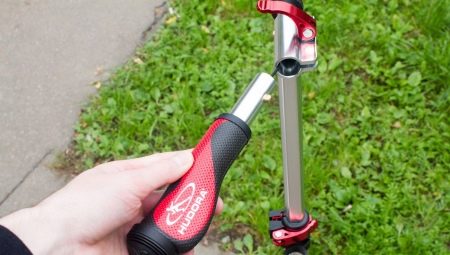
One of the most important components of any scooter, which is responsible for its control and maneuverability, are grips. These units absorb vibration when driving on rough roads, and also prevent your palms from sliding over the handlebars. In this article, you will find out what role grips play in the design of any scooter, as well as get acquainted with information on how to change these units at home.

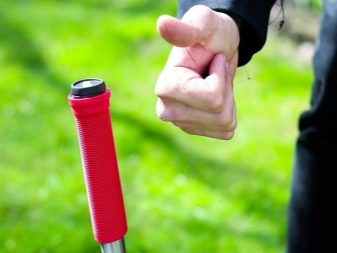
Why do we need it?
Scooter grips are additional pads on the handlebars and perform the same function as bicycle grips - they fix the athlete's hands in a static position, protect against impacts from the metal handlebar grip, reduce vibrations coming from the wheels to the frame, and also prevent the hands from sliding on steering wheel. Professional scooter riders use stiff and rigid grips that provide a minimum degree of slip.
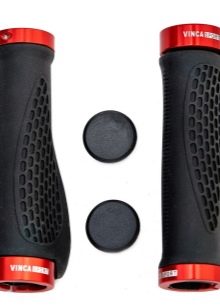
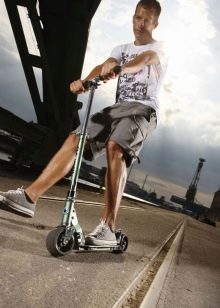
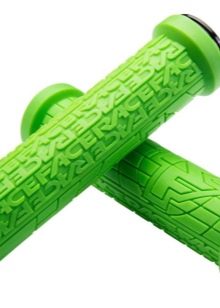
If we are talking about grips for a child, then it is advised to choose the softest models that can absorb vibrations with high quality when driving on uneven surfaces. Improperly fitted scooter grips can cause serious injury.
High-quality grips, even in rainy and hot conditions, will provide a minimum degree of sliding with the surface of the hands, which is a must for professional scooter riding.
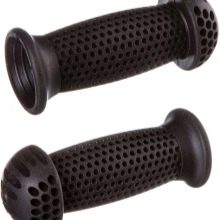
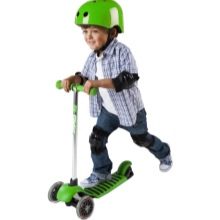
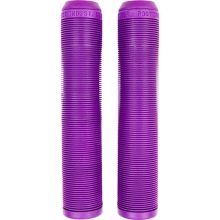
Manufacturing materials
All types of grips can be divided based on their material of manufacture - it is he who is responsible for the rigidity, softness and reliability of the steering wheel of the scooter.
- Rubber. This is the most common and affordable option - it has a budget price, an excellent degree of softness and a long service life. As a minus, the rubber gets very hot in the sun, which will cause your hands to sweat and slip out. From the cold, the rubber freezes and can be unpleasantly cold to the hands.
- Neoprene. It is a soft and porous material based on high quality synthetic rubber. Grips made of this material are always very soft and extremely pleasant to the touch. In addition, neoprene is incredibly lightweight and is capable of efficiently absorbing vibration from the frame and handlebars. On the downside, neoprene absorbs moisture due to its porous surface, which makes it very difficult to clean these grips.
- Craton. These grips are characterized by a high degree of elasticity and resilience, in addition, they are highly resistant to shock and vibration. This material is used in the manufacture of grips for stunt scooters (with the addition of silicone), as it does not allow the hands to slip even in the wettest weather. In addition, in cold seasons, the craton does not cool like rubber and does not heat up from the sun's rays in summer. Even despite its uneven rough surface, the craton does not absorb moisture and repels dirt.
- Silicone. It is one of the most pleasant and resilient materials used to make grips - it is lightweight, durable, perfectly absorbs vibration and at the same time perfectly adjusts to the shape of any hand. In many professional scooters, silicone pads are used as additional inserts to the handlebars, which provide perfect grip on the athlete's hand. Unfortunately, standard silicone is extremely sensitive to direct sunlight and can completely lose its shape after 1-2 months of use in the open sun.
The "big brother" of silicone - foamed silicone is an improved version that can withstand colossal temperatures up to 200 degrees Celsius and even the most aggressive rays of the sun can easily withstand. Another plus of this material is complete inertness to many acids and alkalis, alcohols.
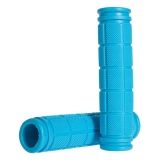
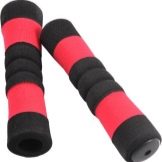
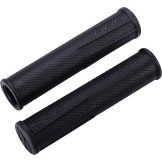
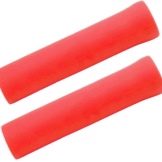
How to remove the old one?
Sometimes there is an urgent need to remove old grips or replace them with newer ones. Depending on the material of your grips, there are several methods for removing this unit.
- We just cut it off. If the grips have already lost their appearance and functionality, or you do not intend to use them in the future, the easiest option is to simply cut them off with a regular office knife. Unfortunately, with this method, you will surely completely ruin the condition of the grips and can damage the integrity of the handlebars.
- We are trying to remove by force. Another simple method for removing grips without the need for tools is to simply pull them off the handlebars using brute force. Such a procedure, if carried out 1 or 2 times, will not cause severe damage to the unit, however, from frequent removal, the grips will lose their elasticity and will slide freely over the surface of the handlebars. This option, with sufficient strength, is suitable for removing even the toughest, hardest grips.
- We use a syringe with water. This is a great method for removing soft and semi-rigid grips, for which you will need a syringe of plain water. The syringe needle should be driven into the gap between the rudder handle and the grips, and then the water should be released until they begin to move freely along the axis of the handle - then they can be removed without hindrance.
- With hot water. This method is great for removing both elastic and rigid grips, however it can severely damage the unit and render it unusable. For this method, you will need a large container of hot water.Place the scooter so that the handles with grips are lowered into a container of water and hold it there for 3-4 minutes, then try to remove the grip.
- We use a compressor. In this case, the fitting from the hose is applied to the gap between the handle and the grip and a gradual supply of air is carried out until the grip is removed without any special difficulties.
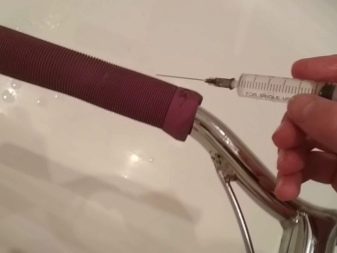
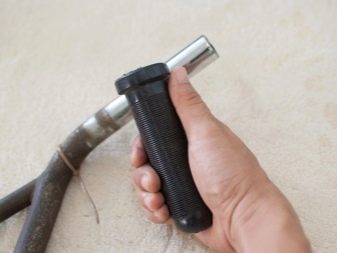
How to choose?
There are a number of important factors to consider when choosing a particular grip model.
- Exactly diameter, not the length of the grips, is the main indicator that affects the maneuverability and usability of the scooter. The standard grip diameter for adult models is 22.2 mm. The grips are the same size for adult bicycles. These models wrap very tightly around the handle and block any hint of slipping. For a small child and teenager, models with a diameter of up to 20 mm should be suitable.
- Length The grip is the second most important indicator of all. In order to determine the optimal length of the grip for your hand, you should measure the width of your palm, and then add up to 3 cm in length. The result will be optimal for your hand. The lengths of grips for children's scooters are chosen according to the same scheme.
- Thickness Is one of the most important factors when it comes to choosing grips for professional scooter models. For those who ride scooters as an amateur, it is recommended to choose thick and soft grips - they will provide better shock absorption and protect your hands from bumps when riding on poor-quality surfaces. If you are a professional athlete, then you probably know that solid grips with a standard thickness are suitable for performing complex tricks - in this case, it is the material of the grip that is important, and not the thickness. Attention should be paid to the thickness of the grips for people who are overweight, as well as those with wide brushes - this will make it more convenient to distribute the load over the entire area of the palm.
- From a factor such as grip shape the effectiveness of vibration absorption from shocks, the likelihood of slipping hands, as well as the ease of use of the scooter depend. In total, two forms are distinguished - anatomical and ergonomic.
These shapes are ideally adjusted to the shape of the palm, perfectly distribute the load on the hands and maintain ventilation.
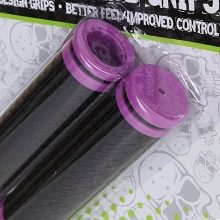
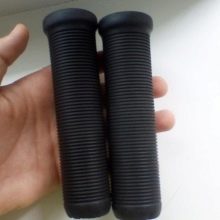
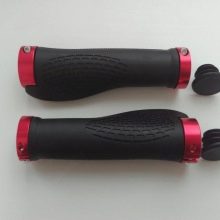
How to put on a new one?
If you want to change your old grips and do not know how to put the new ones on the handlebars, The following recommendations will help you to correctly and tightly pull the grips on the scooter handles, regardless of their type.
- Be sure to check the dimensions of the grip you purchased - they should perfectly fit the diameter of the grips for your scooter. The standard and most common diameters are 22.2 and 23.8 mm.
Keep in mind that the tighter the unit is attached to the handle, the safer it will be to use such a scooter.
- To make the process of putting the grips on the handles faster, they should be slightly wetted inside right before the procedure. This will avoid a lot of friction and speed up the whole process. For wetting, ordinary or soapy water or a few drops of sunflower oil can be selected. Unfortunately, after putting on the grip in this way, the scooter should not be touched for the next 24 hours - it is likely that the moisture has not yet dried out. To make it evaporate faster, use an alcohol-based lubricant to lubricate the grip or hairspray - it will simultaneously reduce friction and, after drying, will act as an adhesive.
- In order to put on rigid grips, they should first be warmed up in boiling water for a few minutes or simply heated under a hair dryer. This will slightly soften the structure of the grips and allow them to be quickly pulled over the handles.
- If you have a foam grip, you can tighten it using the long knitting needles. To do this, you need to stick several knitting needles directly into the grip along its entire circumference and pull the unit with force onto the handles, using the knitting needles as guides. At the end, the knitting needles should simply be pulled out.
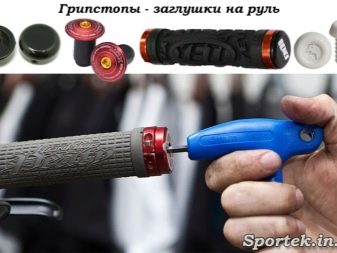
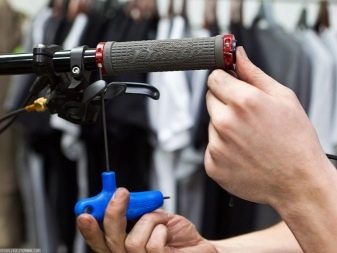
Manufacturers
If we talk about brands that are engaged in the production of the best and highest quality scooter grips, then here are the following companies: Chilli, Lucky and Tilt... They are engaged in the production of both budget grips for amateur riding on a scooter, and the production of professional models for stunt scooters like Hipe or FOX PRO.
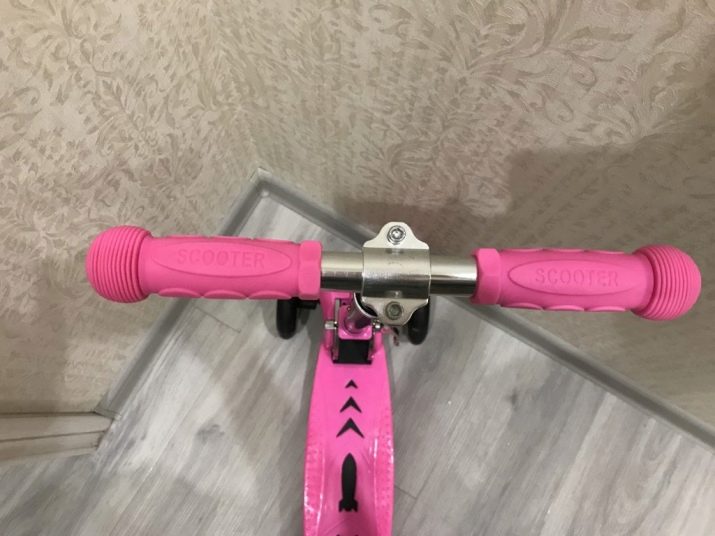
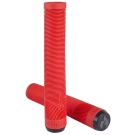
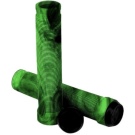
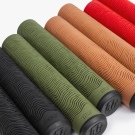
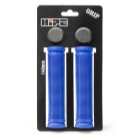
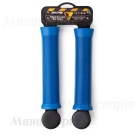
See below for how to put on and take off the grips.








